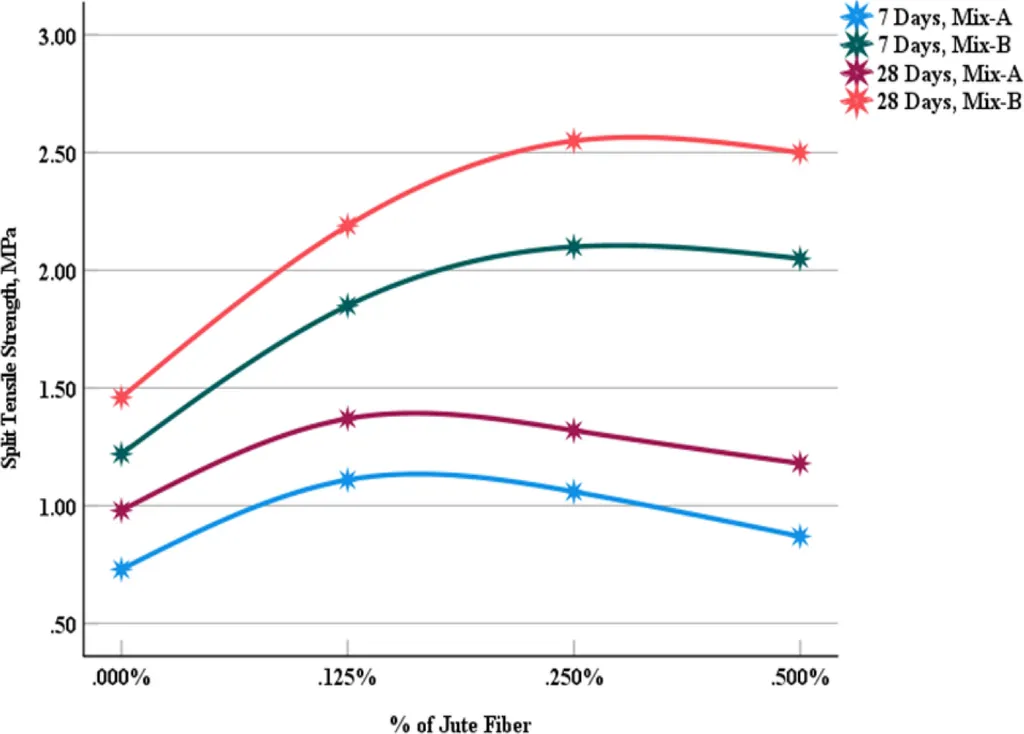In the quest to bolster concrete’s strength and durability, researchers have turned to an unconventional ally: jute fibers. A recent study led by Saniul Haque Mahi from the Department of Civil Engineering at Dhaka International University, Bangladesh, explores how jute fiber reinforcement, coupled with surface treatments, can significantly enhance concrete’s mechanical properties. Published in the *International Journal of Emerging Research in Engineering, Science, and Management* (translated as *Journal of New Research in Engineering, Science, and Management*), this research could pave the way for more robust and sustainable construction practices, particularly in the energy sector.
Concrete, while robust under compression, has long been plagued by its low tensile strength and tendency to crack. To address these issues, Mahi and his team investigated the effects of incorporating jute fibers into M20-grade concrete. The fibers were added at varying volume fractions—0.1%, 0.2%, and 0.4%—and subjected to three different surface treatments: alkali (6% NaOH), acidic (2% HCl), and hot water (80–100°C). The goal was to determine how these treatments would influence the concrete’s workability, compressive strength, and split tensile strength.
The findings were revealing. “We found that adding jute fibers decreased the workability of the concrete mixture,” Mahi explained. “As the fiber content increased, the slump—the measure of workability—decreased.” However, the alkali treatment emerged as a game-changer, enhancing both workability and fiber dispersion. “Alkali-treated jute fibers resulted in the best improvements in compressive and split tensile strength, especially at lower fiber contents,” Mahi noted. In contrast, acidic treatment degraded the fibers, leading to poorer workability and weaker mechanical properties.
The implications of this research are profound, particularly for the energy sector, where the durability of concrete structures is paramount. “By improving the tensile strength and crack resistance of concrete, we can enhance the longevity of structures such as wind turbine foundations, nuclear power plant containment buildings, and other critical infrastructure,” Mahi said. This could lead to significant cost savings and reduced environmental impact over the lifecycle of these structures.
The study also highlights the potential for sustainable construction. Jute, a natural fiber, is biodegradable and renewable, making it an eco-friendly alternative to synthetic fibers. “This research not only improves the mechanical properties of concrete but also aligns with the growing demand for sustainable and green construction materials,” Mahi added.
As the construction industry continues to evolve, the integration of natural fibers like jute, coupled with innovative surface treatments, could revolutionize the way we build. Mahi’s research offers a promising pathway to stronger, more durable, and more sustainable concrete, setting a new standard for the future of construction.

